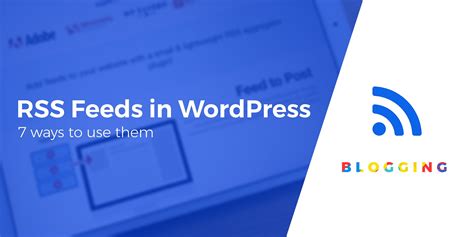In the ever-evolving landscape of content delivery, an intriguing development is the resurgence of RSS feeds, now coupled with styling enhancements that promise a more visually appealing and user-friendly experience. While the core technology behind RSS feeds remains unchanged, the ability to style these feeds with CSS or XSLT has rekindled interest among tech enthusiasts and developers. The appeal of stylized RSS feeds lies in their ability to transform raw, structured data into beautifully formatted content that enhances readability and user engagement.
One of the notable advancements in this field is the application of XSLT (Extensible Stylesheet Language Transformations) for styling RSS feeds. This technology allows developers to transform XML data into HTML directly within the browser, enabling a seamless integration of stylized feeds into web applications. For example, by employing a simple XSLT stylesheet, a developer can dictate how each element of the RSS feed is displayed, from the overall layout to specific text styles and colors.
However, implementing these styles comes with its own set of challenges. The customization of feed presentation can often require modifications to HTTP headers, which might not always be supported by all hosting platforms. For instance, platforms like GitHub Pages do not allow changes to HTTP headers, thus limiting the extent to which feeds can be customized on these services. This limitation underscores the need for platform providers to potentially update their service capabilities to support advanced content styling and distribution options.
Despite these technical hurdles, the user experience benefits of styled RSS feeds cannot be overstated. By enhancing the presentation of RSS feeds, publishers can make their content more accessible and attractive, potentially increasing reader engagement. This is particularly poignant for users who might be less familiar with the raw XML format of traditional RSS feeds. Enhanced feeds can serve as a bridge, bringing more users into the fold of RSS subscribers by offering a more intuitive and engaging content experience.
Another intriguing aspect of this evolution is the potential for RSS feeds to bypass traditional web browsing constraints. Styled feeds enable publishers to deliver content directly to feed readers, reducing dependency on web browsers and potentially enhancing privacy by limiting tracker exposure. This method of content delivery aligns with growing concerns about user data privacy and the pervasive tracking technologies employed by many websites today.
As we look to the future, the continued innovation and adoption of styled RSS feeds represent a significant shift in digital content consumption. They offer an alternative pathway for accessing information, one that prioritizes user experience and accessibility. The growing discourse around these technologies is not only about technical capabilities but also about reimagining how content can be structured, styled, and delivered in an increasingly digital world.


Leave a Reply